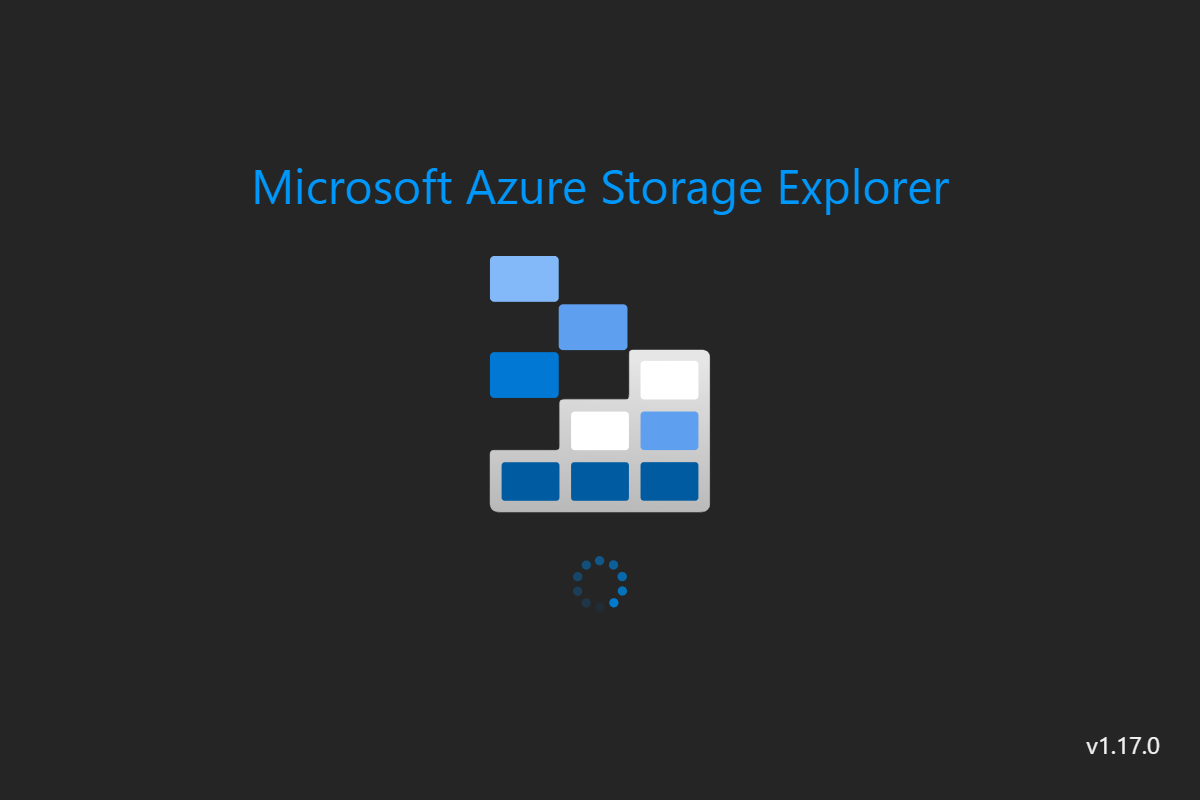

- MICROSOFT AZURE STORAGE EXPLORER POWERSHELL FOR MAC
- MICROSOFT AZURE STORAGE EXPLORER POWERSHELL INSTALL
- MICROSOFT AZURE STORAGE EXPLORER POWERSHELL UPDATE
- MICROSOFT AZURE STORAGE EXPLORER POWERSHELL TRIAL
- MICROSOFT AZURE STORAGE EXPLORER POWERSHELL DOWNLOAD
Using the Azure Table Service REST API we are able to quickly search the Table for the records we are looking for. Using the AzureRM PowerShell Module and the TableBatchOperation class from the we are able to batch the record inserts into 100 row batches.

MICROSOFT AZURE STORAGE EXPLORER POWERSHELL DOWNLOAD
With my Storage Account being in Central US and myself in Sydney Australia loading the ~26k entries took 4 mins 27 seconds to insert. Download Microsoft Edge More info about Internet Explorer and Microsoft Edge Table of contents.
MICROSOFT AZURE STORAGE EXPLORER POWERSHELL UPDATE
Update Line 3 for where you want to output the file too. This will provide ~26k entries and is a good test for loading into Azure Table Service.

The following script will obtain the Vendors list from here and save to your local disk. Rather than exporting to XML I will load it into Azure Table Storage.
MICROSOFT AZURE STORAGE EXPLORER POWERSHELL FOR MAC
The example data I will use here is the dataset from a post last year for MAC Address Vendors lookup. Using the Azure Storage Explorer I created a Table named NICVendors. Whilst you can also create the Table via the PowerShell AzureRM Module or the Azure CLI, it is also super quick and easy using the Azure Storage Explorer which will be used later to verify the loaded dataset. Expand the Storage Account, select Tables and right-click and select Create Table. Using the Azure Storage Explorer, authenticate to Azure and navigate to your Storage Account.
MICROSOFT AZURE STORAGE EXPLORER POWERSHELL TRIAL
Some trial and effort later I got it to do want I needed and then using the Azure Table Service REST API I was able to easily query the dataset. Naturally, I needed to use PowerShell to perform this and I quickly found out that the AzureRM PowerShell Module could do the basics, but it wasn’t going to scale to the size of the datasets I had. I had previously used Azure Blob Storage but hadn’t done too much with Azure Table Storage. If you find a problem with this article, click Improve this Doc to make the change yourself or raise an issue in GitHub.As part of both a side project and a work project I recently had a couple of larger datasets that I needed to put into a database and be able to search them. Now that you've linked Storage Explorer to Azure Stack Hub, you can access all of your storage accounts. Sign in with your Azure Stack Hub credentials when prompted. Select Add an Azure Account > Azure, then click Next.
MICROSOFT AZURE STORAGE EXPLORER POWERSHELL INSTALL
Connect Storage Explorer to an Azure Stack Hub subscription with Azure ADĭownload and install Storage Explorer here.įrom the Edit menu, select Target Azure Stack Hub APIs then restart Storage Explorer.Note that the setup process for this version will differ slightly to the steps below. If you need to copy and paste objects to public Azure, then you must install v1.13.1 of Storage Explorer. For further information, see the associated GitHub issue. Whilst the latest version of Storage Explorer works fine with Azure Stack Hub storage objects, it currently doesn't allow you to copy and paste objects from a container in Azure Stack Hub to a container in public Azure.


 0 kommentar(er)
0 kommentar(er)
